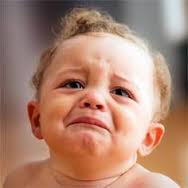Observing our babies and children helps us get to know them better. The more we know them and can read their emotions, the better equipped we will be to meet their needs and teach them.
Look at these pictures that depict baby’s emotions. See if you can identified them correctly. You can look at the descriptions below to help you see the differences. Then watch for these emotions and see what they look like on your baby.







Happy – A big smile, with cheeks lifted up and wrinkles forming at the corners of the eyes. May wave or clap while babbling in a high pitch. Baby is enjoying what is going on around.
Angry – Red-faced crying, with eyes squinted shut and maybe pushing your hand away. Baby is frustrated. He/she may be overstimulated and need a break. Whatever is frustrating him should be stopped.
Interested – Eyes zoom in on something with lowered or raised eyebrows; mouth slightly agape. Your baby will learn best when she is interested in what is happening around her.
Surprised – Eyes wide ope, maybe even exposing the whites of the eyes. Baby will look to see what your reaction is to whatever surprised him. Give baby feedback and comfort when needed.
Sad – Corners of the mouth turn down, both eyebrows arch up and come together in the middle. Let your baby know you see he is sad. Help him cope with his sadness.
Scared – Eyes frozen open. Face and hands tremble. May be very still or cry out. Try to determine what frightened your child. Reassure and remove from the situation when necessary.
Disgusted – Wrinkled up nose and sometimes an asymmetrical raise of the upper lip. Baby reacts with this expression most often for a smell or taste she doesn’t like.
